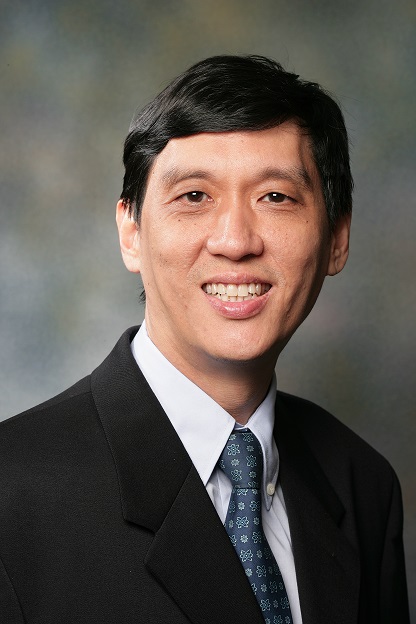Applied Application for Tolerance Stackup and Analysis
This course equips you with skills to analyze tolerance stack-ups, predict variations, and optimize mechanical designs for enhanced manufacturability and product performance.
What you will learn and apply by the end of the course:
- To identify, analyze, and evaluate the degree of fit and variation in a specific design assembly
- To comprehend and apply the principles and methodologies for evaluating design tolerances using a systematic approach
- To critically assess and compare tolerance stack-up methods on Geometric Dimensioning and Tolerancing-specified parts, ensuring effective application
| DAY 1 | ||
| Module | Content | Methodology/Activities |
| Tolerance Development and Application Methods | Understand and Use of Tolerance Development Process Methods. | Lectures with Visual Aids |
| DAY 2 | ||
| Module | Content | Methodology/Activities |
| Tolerance Setting, Statistical Analysis, and Optimization | Understand and Use Tolerance Limit Setting for Part Yield, Statistical Tolerance Analysis Methods for Manufacturing Process Applications, and Sensitivity Analysis methods for Tolerance Optimisation. | Lectures with Visual Aids |
| DAY 3 | ||
| Module | Content | Methodology/Activities |
| Advanced Statistical and Computer-Based Tolerance Stack-up Methods | * Assessment 1 Applying Statistical Stack-up Methods, Toleranced-Based Analysis, Computer-based Stack Tolerancing methods to handle tight tolerances and functional requirements. | Lectures with Visual Aids and Formative Assessment |
| DAY 4 | ||
| Module | Content | Methodology/Activities |
| Tolerance Allocation and Analysis with Geometric Dimensioning and Tolerancing for Design and Processes | * Assessment 2 • Tolerance Allocation Methods for Design and Processes. • Tolerance Analysis and Stackup Concepts with Geometric Dimensioning and Tolerancing for Part Stacks. | Lectures with Visual Aids and Formative Assessment |
| DAY 5 | ||
| Module | Content | Methodology/Activities |
| Tolerance Analysis and Stackup for Size and Axis Transfer in Part Assemblies | • Tolerance Analysis and Stackup on Size Limit Transfer for Part and Assembly Stacks. • Tolerance Analysis and Stackup on Axis Transfer for Part and Assembly Stacks • Revision - Discussion and Clarifications. * Assessment 3 | Experiential Learning and Formative Assessment |
Personnel who need to read engineering drawings. Relevant occupations include:
- Engineering Managers
- Product Designers
- Process and Tooling Engineers and Technical Personnel
- Quality Control Inspectors
- Procurement Personnel
Duration: 6 days: (35 hours: 21 hours of Classroom + 11.5 hours of Synchronous E-Learning + 2.5 hours of assessment)
Applied Application for Tolerance Stackup and Analysis Registration Closed |
Note: NTU reserves the right to change the date, venue, and mode of delivery due to unforeseen circumstances.
Upon successful completion of the course, learners will be awarded with an e-Certificate of Completion. |
Standard Course Fee: S$3,270.00
SSG Funding Support | Course fee | Course fee payable after SSG funding, if eligible under various schemes | |
BEFORE funding & GST | AFTER funding & 9% GST | ||
Singapore Citizens (SCs) and Permanent Residents (PRs) (Up to 50% funding) | S$3,000.00 | S$1,770.00 | |
Enhanced Training Support for SMEs (ETSS) | S$1,170.00 | ||
SCs aged ≥ 40 years old | |||
Funding Requirements:
- You must achieve a minimum of 75% attendance for each module.
- You must complete and pass all assessment components.
Read more about funding here.
• NTU/NIE alumni may utilise their $1,600 Alumni Course Credits. Click here for more information.
 | Dr Sun-Woh Lye Dr Lye, PhD, FIES, is currently a professor from the School of Mechanical and Aerospace Engineering, Nanyang Technological University, Singapore. He has taught for more than 30 years at both undergraduate and graduate levels relating to design and manufacturing modules such as Design Optimisation and Analysis, Computer Aided Design, Engineering, Advanced Product Design for Manufacture, Virtual Design for Manufacture, Industrial Design, Machining and Process Engineering. He is also active in conducting of professional engineering courses as well as served as consultant at both project advisory and development roles to companies in his area of expertise. Besides teaching, he had held administrative positions in overseeing of graduate and research programmes, fostering research projects and funding, transfer and commercialisation of technological innovations. |


